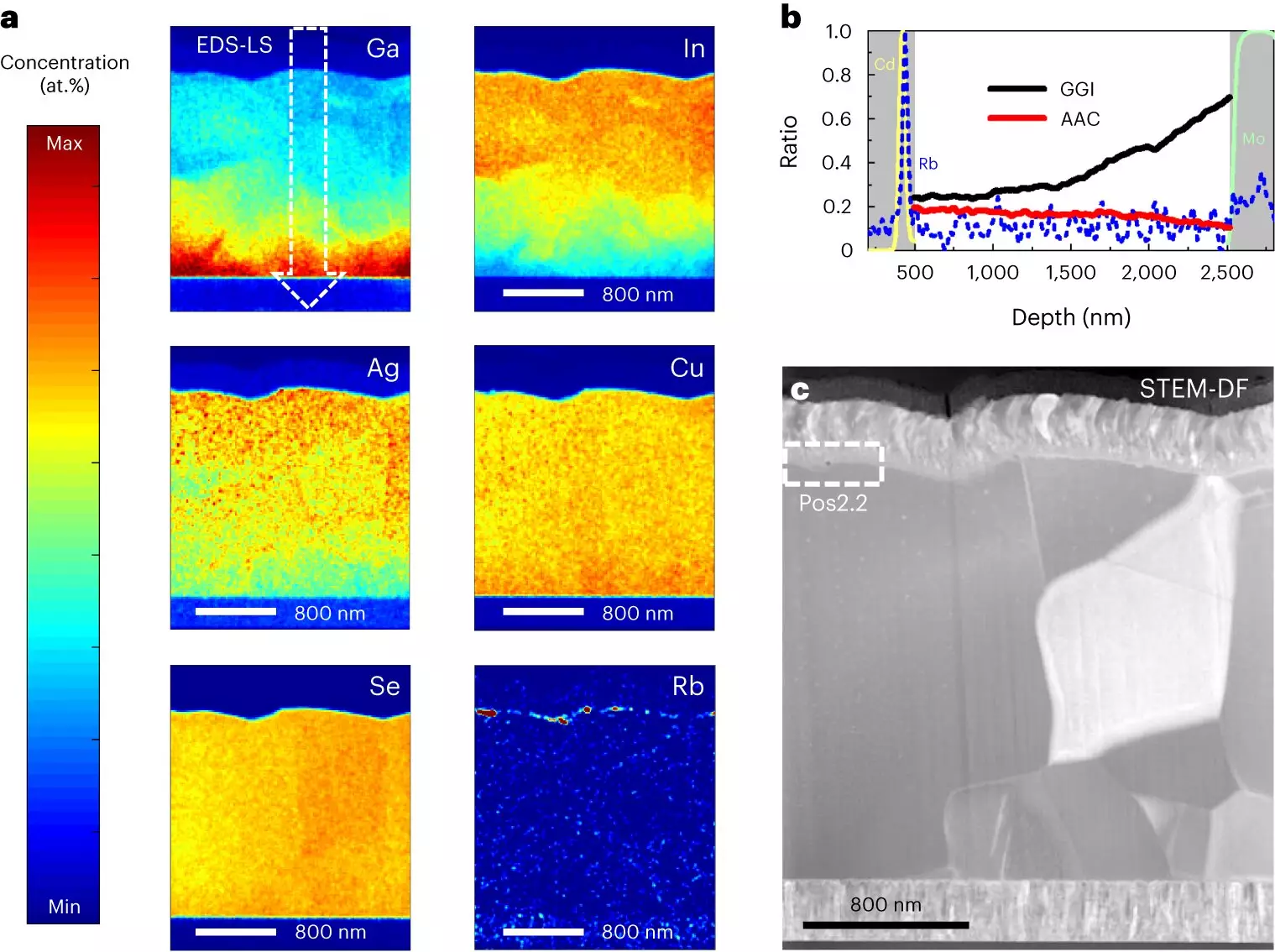Chalcopyrite-based solar cells have long been a focus of research in the renewable energy industry due to their potential for high energy conversion efficiency. Recently, researchers at Uppsala University and at the First Solar European Technology Center AB in Sweden have made significant progress in improving the efficiency of these solar cells.
The team of researchers was able to achieve an efficiency of 23.64% in chalcopyrite-based solar cells by implementing two key techniques: high-concentration silver alloying and steep back-contact gallium grading. This breakthrough, reported in Nature Energy, represents a significant advancement in the field of solar technology.
The researchers drew inspiration from past studies that demonstrated the successful silver alloying with copper indium gallium selenide and the beneficial effects of implementing heavy alkali species into absorber materials. By building on decades of international research on chalcopyrite solar cells, the team was able to combine four different approaches to improve performance.
Through a combination of design and fabrication strategies, the researchers were able to enhance the microstructure of CIGS, reduce the density of defects, and mitigate band gap fluctuations. Additionally, they were able to passivate the surface of the absorber and increase the doping density, leading to a high external radiative efficiency of 1.6%.
The record CIGS solar cell achieved an efficiency of 23.64%, surpassing the previous record of 23.35%. This groundbreaking achievement was externally certified by the independent institute Fraunhofer ISE in Germany. Further tests in the researchers’ labs even showed an efficiency of 23.75%, highlighting the potential for even greater improvements in efficiency.
The recent work by this team of researchers opens up new possibilities for the production of chalcopyrite-based solar cells with even higher efficiencies. These findings lay the groundwork for future advancements in the field, with the goal of surpassing a 25% efficiency. Strategies to mitigate parasitic absorption losses and reduce the defect density of the absorber bulk will be key areas of focus for future research.
The breakthrough in chalcopyrite-based solar cell efficiency represents a significant step forward in the development of renewable energy technologies. By combining innovative techniques and drawing on past research, the researchers have laid the foundation for the continued improvement of these solar cells. With the potential to reach efficiencies beyond 25%, the future of chalcopyrite-based solar cells looks bright.


Leave a Reply